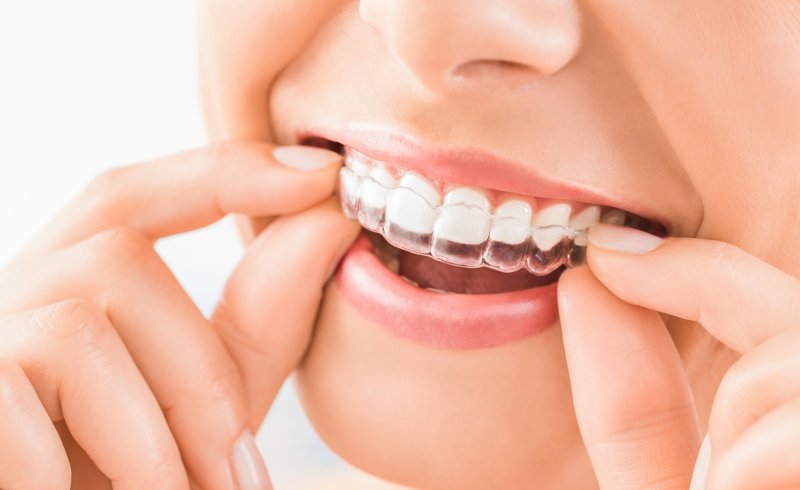
Since Invisalign became available in 1997, it has allowed millions of people to straighten out their smiles without the conspicuous metal parts and frustrating dietary constraints that come with traditional braces. This modern orthodontic solution can address a range of alignment issues including overbites and underbites to give the patient a beautiful new smile. Here’s a brief guide to the Invisalign process and the bite problems it can correct.
How Does Invisalign Work?
Invisalign works by gradually shifting teeth into healthier positions through consistent pressure applied by a sequence of customized aligners. The patient must wear each set of aligners for at least twenty hours a day for two weeks before switching to the next set in the sequence. Each pair of aligners will pick up where the last one left off in the process of pushing the teeth into better alignment. By the end of the treatment, the patient will have a straighter, healthier, and more beautiful smile.
What Orthodontic Issues Can Invisalign Address?
Invisalign can fix a range of orthodontic issues such as:
- Crooked teeth that cause uneven wear during the chewing process
- Gaps that leave the gums more vulnerable to injury and infection
- Crowded teeth that make the smile harder to clean
- Overbites that leave the top front teeth more vulnerable to injury and make it difficult to chew
- Underbites that cause speech and chewing difficulties
- Crossbites that lead to discomfort and dental damage
- Open bites that keep the teeth from meeting when the mouth is closed
Is Invisalign Suitable for All Alignment Issues?
While Invisalign is an excellent way for many patients to achieve a straighter and healthier grin, it is not suitable for everyone. Traditional metal braces may be better to address severe or complex alignment issues. In some cases, a patient’s teeth may not be shaped right or be spread too far apart for clear aligner treatment. If a tooth needs to be rotated more than 20 degrees or if it is tilted more than 45 degrees, it may require treatment with traditional braces to be aligned properly. Previous dental work like bridges, veneers, or crowns may also make Invisalign impractical.
Invisalign may be the ideal way to adjust your bite alignment into a healthier and more pleasing arrangement. After a brief consultation, your dentist will be able to tell you if Invisalign is right for you.
About the Author
Dr. Xhelo Shuaipaj earned his dental degree from the Loyola University College of Dental Surgery with clinical honors and stays abreast of the latest developments in his field by participating in continuing education courses. He is proud to hold Fellowships with the Doctors for Oral Conscious Sedation and the International Congress of Oral Implantologists. His offices in Lemont and Downers Grove offer general, restorative, cosmetic, and emergency dentistry as well as Invisalign services. To schedule your Invisalign consultation, contact his practice online.
